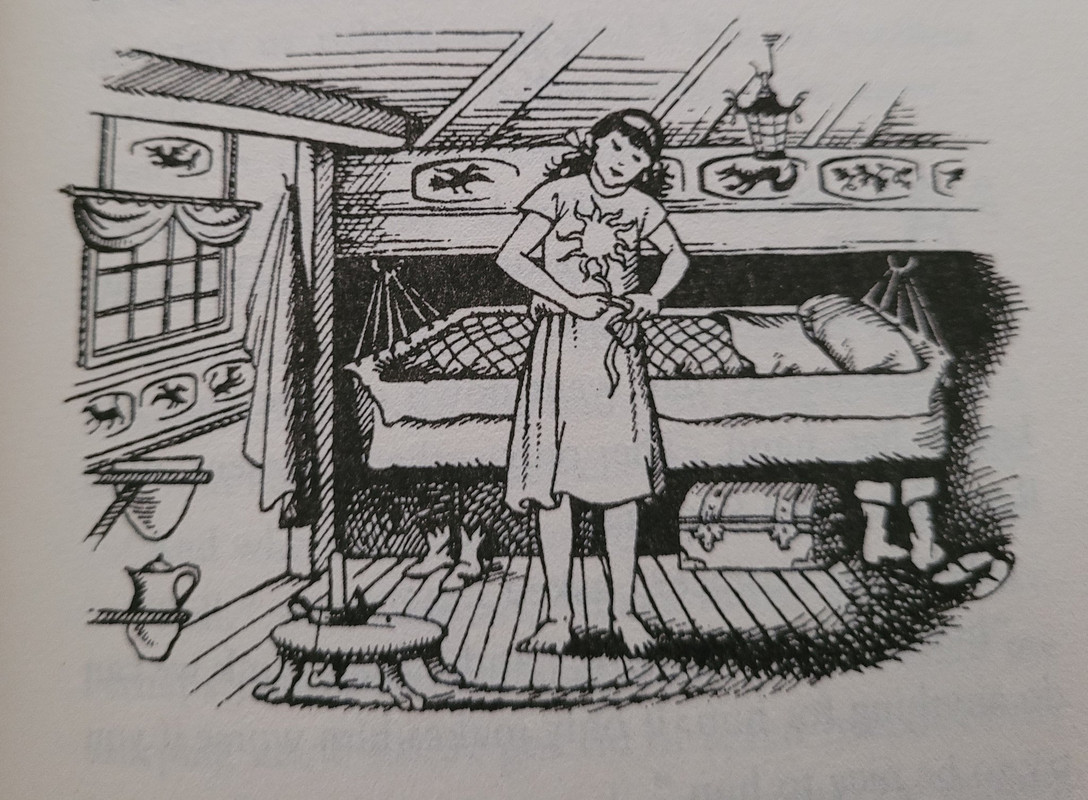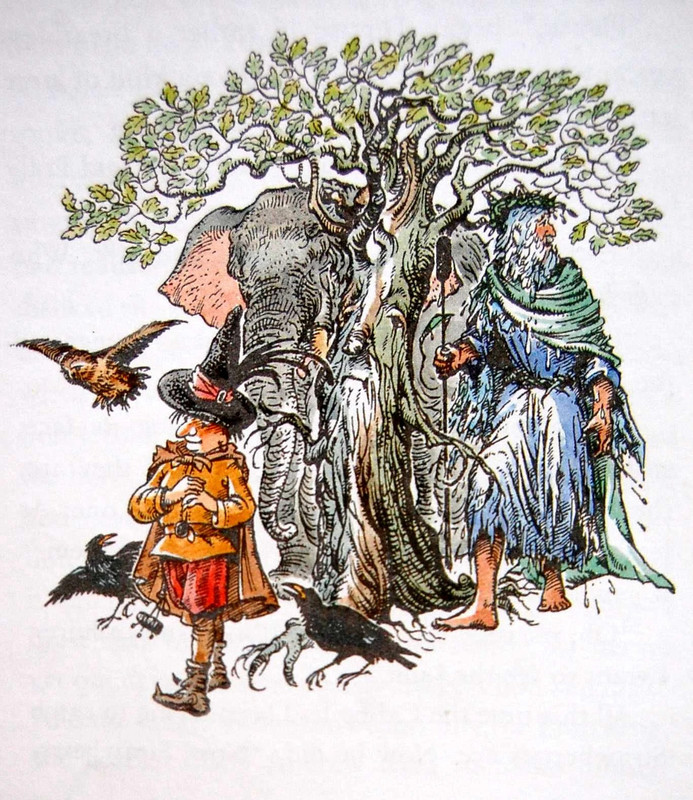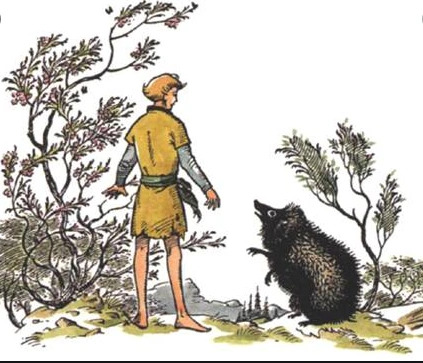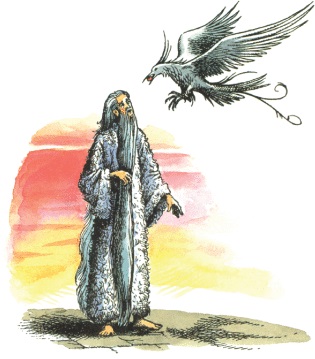One thing I was curious about, is why are there so many barefoot characters in the Narnia novels? The Narnia wiki even has a special category for them. Namely, we have:
Lucy Pevensie, who is specifically noted to enjoy going barefoot

Coriakin

Ramandu
Ramandu's daughter

The Hermit of the Southern March

Dryads

The River God

Shasta, though it's not by choice in his case

Puddleglum

In addition, Merlin from the Hideous Strength is also described as barefooted.
I was wondering if there's some sort of symbolism behind it, and what was Lewis' attitude to going barefoot in real life?
My immediate assumption is that it's supposed to be, like... more natural/closer to earth, possibly with a side of humility. Especially since all the named characters are Good-alligned and many of them (ex-Star and Star's Daughter, Hermit, Merlin) have a special connection to nature and/or powers linked to the natural world.
It's also far different from the everyday English experience, with shoes and socks worn by everyone, and few places in the towns and cities where it would be safe to go barefoot.
Narnian ground is safer, I think, and so the children are delighted to kick off their shoes and run barefoot. Whee! Freedom! (Although, when Lucy kicks off hers at the start of VDT it's to save her life in deep water!)
In an decade where the word 'hippie' had not yet been invented, barefoot adults were Bohemians, artists, alternative people. The idea of being closer to nature is a good one.
There, shining in the sunrise, larger than they had seen him before, shaking his mane (for it had apparently grown again) stood Aslan himself.
"...when a willing victim who had committed no treachery was killed in a traitor's stead, the Table would crack and Death itself would start working backwards."
I agree with all that's been said, and also there is probably a Biblical connection to the New Testament, like the chapter where Christ washes the feet. Having clean feet means you are on the road to being pure and cleansed of your sins.
There's a variety of different articles on TV Tropes .com exploring the history of various storytelling conventions surrounding the use of Bare Footed characters. I would suspect that in the case of Narnia it's a little bit of all of them:
https://tvtropes.org/pmwiki/pmwiki.php/Main/EarthyBarefootCharacter
https://tvtropes.org/pmwiki/pmwiki.php/Main/BarefootSage
https://tvtropes.org/pmwiki/pmwiki.php/Main/BarefootLoon
https://tvtropes.org/pmwiki/pmwiki.php/Main/MagicalBarefooter
https://tvtropes.org/pmwiki/pmwiki.php/Main/DoesNotLikeShoes
By contrast, i guess I'm always a little bit skeptical when people suggest that something in the Chronicles is some deep rooted Biblical reference, since I've always felt that (for the most part) the Biblical references in the stories tend to be at the broader conceptual or thematic level, whilst the deeper cuts of lore referenced in the narrative are often more likely to come from classical literature and mythology. Maybe that's just me though.
Does anyone else think it might be partly because CS Lewis just loved going barefoot when he was a kid? (as did I).
This is the journey
This is the trial
For the hero inside us all
I can hear adventure call
Here we go
@glenwit Eh, it's not inconceivable... it just seems *likely* to me there was an extra layer involved, with how consistently it comes up and how much symbolism the Chronicles tend to have?
@glenwit middle-class Anglo-Irish children at the turn of the 20th century would wear shoes all the time (one thing that showed their status). It might have been something special for him, I suppose.
There, shining in the sunrise, larger than they had seen him before, shaking his mane (for it had apparently grown again) stood Aslan himself.
"...when a willing victim who had committed no treachery was killed in a traitor's stead, the Table would crack and Death itself would start working backwards."
In an decade where the word 'hippie' had not yet been invented, barefoot adults were Bohemians, artists, alternative people.
Very interesting! Do you think Lewis was somehow related to eccentric artsy people, and/or had them in mind when he wrote Coriakin, Ramandu, etc.?
@mickey probably not personally but he would know of such people.
There, shining in the sunrise, larger than they had seen him before, shaking his mane (for it had apparently grown again) stood Aslan himself.
"...when a willing victim who had committed no treachery was killed in a traitor's stead, the Table would crack and Death itself would start working backwards."
I don't think I would have thought much of it. Though I'm not sure if someone being bare foot and long haired would be considered to be "hippies" or bohemians. I think the "gypsies" or "Romanis" were also bare foot. I don't know if they were any in Narnia, though.
"And this is the marvel of marvels, that he called me beloved."
(Emeth, The Last Battle)

My immediate assumption is that it's supposed to be, like... more natural/closer to earth,
I quite like that actually. I feel the Narnians felt more connected to Aslan and Narnia itself when they went barefoot. Especially people like Coriakin and Lucy who had met Aslan in person. They probably went barefoot to connect to him when he wasn't there, and the world that he had created.
Does anyone else think it might be partly because CS Lewis just loved going barefoot when he was a kid? (as did I).
Of course! ![]() An essential part of Narnia is being a child and never growing up. Going barefoot is just the Pevensies being children, and honestly, the child-like qualities of running in grass barefoot, brings Narnia to its fullest.
An essential part of Narnia is being a child and never growing up. Going barefoot is just the Pevensies being children, and honestly, the child-like qualities of running in grass barefoot, brings Narnia to its fullest.
-KingEdTheJust
"But even a traitor may mend. I have known one that did." - (King Edmund the Just, Horse and his Boy)


